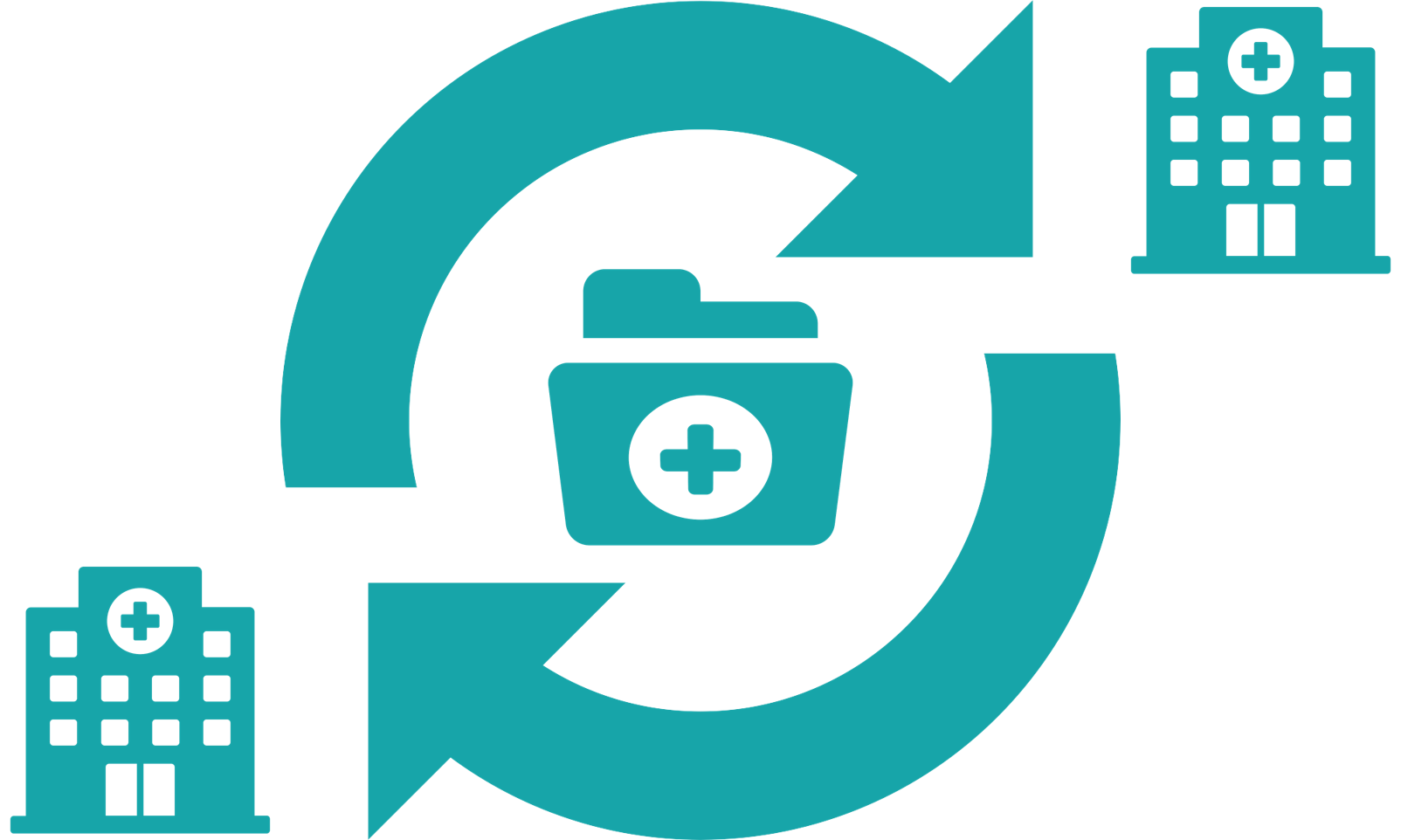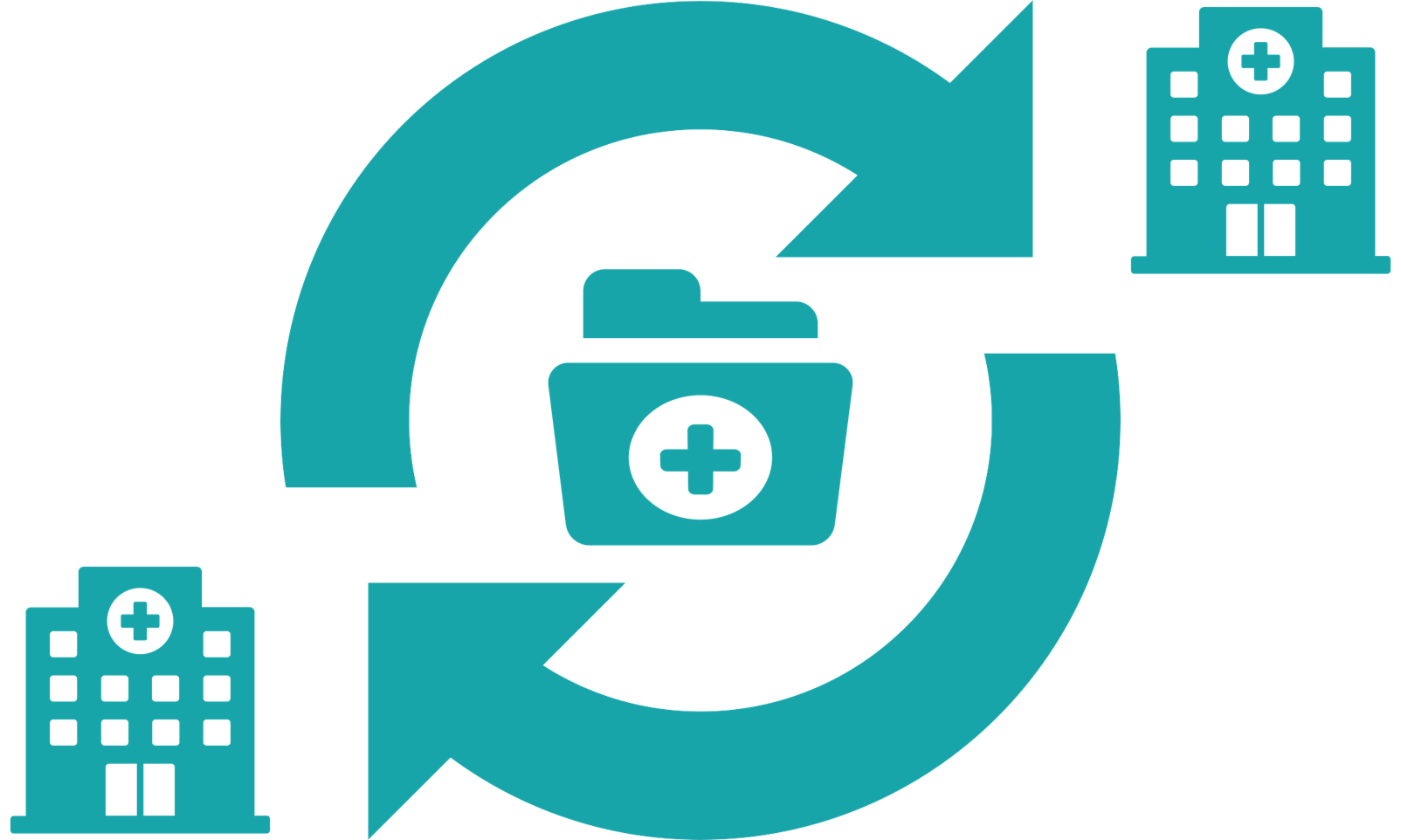Leveraging EHR interoperability for transitions of care
From large healthcare systems and Integrated Delivery Networks to private practice offices and urgent care clinics, patients have numerous options for their care depending upon the urgency of their condition and their provider preferences. Inexplicably, each of these disparate care locations often have their own electronic health record (EHR) systems; even when part of the same health system or group. This makes it time consuming, costly and challenging for providers to see the full picture of a patient’s medical care, which is a key component of treatment. Without a holistic view, providers often request duplicative testing, or risk missing allergies and medication interactions which can have serious medical consequences – all of which increase costs. These challenges are exacerbated with patient populations that do not understand how to navigate a complex healthcare system, who are managing multiple disease states, or who face other financial or logistical challenges. For healthcare system executives, EHR interoperability is no longer a nice-to-have in an environment where health systems are penalized for 30-day readmissions, are committed to risk-sharing agreements with payers and need to meet MACRA/MIPS requirements for quality measures such as reconciling outside data. Interoperability is how health systems should approach data sharing. Before venturing into key tactical considerations for addressing the underutilization of interoperability and framing the business case around strategic initiatives, it is first important to level-set on what interoperability is in the first place.
So, what is EHR interoperability?
“EHR interoperability is essentially the ability of different EHR systems to work together, exchanging and using patients’ electronic health information. True interoperability is automatic and seamless, requiring no special effort from users.”1 This sharing of medical information is typically focused on the sharing of allergies, medications and problem lists across health systems and is functionality that providers have been clamoring for years. Examples of this type of functionality include Epic’s CareEverywhere and Cerner’s HealthIntent. Yet, after two decades of work, where does interoperability stand? An April 20, 2018 article indicated, “62 percent of hospitals were not utilizing patient information from outside their EHR system, because outside data was not available in their systems’ workflow” and “72 percent reported the incoming patient information was not presented in a useful format, a 5 percent increase in 2017.”2 This is an indication that the improvement in transitions of care, reducing 30-day readmissions and enhancing clinical outcomes are not being met. A mixed methods study published by Applied Clinical Informatics was performed at four large hospital emergency departments between January 2012 and November 2012 showing that “an EHR interoperability tool was used in approximately 1.46% of ED encounters and resulted in 560 duplicate diagnostic procedures being avoided and 28 cases of drug-seeking behavior identified.”3
Why is interoperability functionality sub-optimal and how can it be improved?
One major issue is that too often, interoperability is taught briefly at ‘the implementation phase’ and only focuses on the technical functionality without clear focus on how to merge it with the clinical workflow. Another issue may lie within the governance process of implementation. Typically, EHR interoperability falls within the scope of a health system’s Information Systems (IS) team. “Though it’s a technological issue, it’s not just a technological issue. As we have seen in other industries, interoperability requires all parties to adopt certain governance and trust principles, and to create business agreements and highly detailed guides for implementing standards. The unique confidentiality issues surrounding health data also require the involvement of lawmakers and regulators. Tackling these issues requires multi-stakeholder coordinated action.”4
How can interoperability be saved?
Here are 5 thoughts to consider to harness the potential power of an integrated interoperability workflow:
1. Conduct a current-state needs assessment of the clinical practice needs and the EHR functionality that support those needs
2. Establish a committee to support decision-making with prioritization criteria of functionality and training enhancements, driven by an operational lead who can:
- Partner with IS and clinical leads on integrated clinical workflows
- Manage project timelines for piloting workflows across departments
- Assess utilization metrics for process improvement
3. Develop and implement comprehensive training strategy for EHR interoperability functionality including materials (i.e., tipsheets, e-learnings, SharePoint site to hold reference materials) and identify resources to provide workshop style and shoulder-to-shoulder support training
4. Consider medical record information sharing strategies with privacy/legal which may drive initiatives related to streamlining consent collection via new functionality and workflows (i.e., e-consents), updating the patient notice of privacy, informed consent and privacy opt-out education
5. Assess if there are regional interoperability exchange committees that would be beneficial to be part of to support/encourage interoperability across institutions, address workflow challenges and pull consensus to provide feedback to EHR vendors for new/enhanced functionality
Building the business case for integrated interoperability
A significant challenge for many organizations is how to advocate for resources and communicate the business need related to developing and operationalizing integrated interoperability workflows. Integrated interoperability is directly aligned to and supports five common strategic priorities including:
1. Preventing provider burn-out and increasing provider/staff satisfaction
Integrated interoperability workflows can support clinicians’ decision making for better patient outcomes while streamlining one of the most inefficient and costly clinical practices; chart prep. Too often the clinical staff spends hours prepping patient charts prior to clinical visits to optimize the time with patients. This can mean calling other practices or requesting paper charts to be faxed/mailed; minimizing productive patient-facing time. Truly integrated interoperability workflows can reduce provider burn-out by preventing aimless EHR clicking and reducing the length of notes (avoiding “note bloat”) to make clinical notes easier
to read and understood by clinicians and patients alike.
2. Population health
Data leveraged from integrated interoperability workflows can make population health management programs truly actionable by having a clear and comprehensive view of patients clinically that then can be leveraged in conjunction with social and behavioural data points. Consideration will need to be given to how data from the various pieces of technical functionality can integrate and work together for optimal end-user/clinical experience, but any momentum around managing the community better will add substantial value.
3. Accountable care/value-based care initiatives
Successful interoperability workflows are the foundation for value-based care initiatives. A study published in 2018 indicated that, “data sharing and interoperability issues may have slowed value-based care implementation. In 2015, adoption was projected to increase to 50 percent in 2018, but the survey shows that adoption has only grown from 12 to 24 percent since 2015. However, the survey also shows that the return on investment for value-based care models has improved in the last two years.” 5 For organizations that are part of ACOs or in value-based agreements, this is a significant opportunity to leverage integrated interoperability workflows and collaboration across health systems, clinicians and health plans to leverage outcomes from value-based care.
4. Regional collaboration
Interoperability sharing settings can require a patient to consent to the sharing of their medical information across healthcare institutions, once as part of the patient privacy notice, once a year, or at every encounter. This can directly impact the operational workflows related to chart prep with clinical impacts and presents an opportunity to foster or divest regional collaboration across health institutions. By forming and participating in regional workgroups organizations focused on interoperability functionality and integrated workflows, organizations can create for a basis for additional strategic partnerships for organizations across a region.
5. Patient privacy engagement
Settings related to interoperability functionality can directly raise strategic questions for an organization about how they approach patient privacy. This can open opportunities to think about ways to align seemingly disparate patient privacy initiatives into an integrated patient education campaign for more informed and engaged patient population that prevents costly legal engagements around privacy breaches. This strategic alignment may include thinking about the content of the notice of patient privacy, how patients consent to medical information sharing as well as patient chart protection options and promoting research opportunities to patients.

References.
1Walgran, Kari. “EHR Interoperability in 2017 and Beyond: 10 Key Resources for Healthcare IT Professionals.” InfoDesk, 28 Apr. 2017, www.infodesk.com/life-science-industry/ehr-interop-10-key-resources.
2Livernois, Cara. “36% Of Administrators Continue to Struggle with EHR Interoperability.” Clinical Innovation + Technology, 23 Apr. 2018, www.clinical-innovation.com/topics/ehr-emr/36-administrators-continue-struggle-ehr-interoperability.
3Winden, TJ., et al. “Care Everywhere, a Point-to-Point HIE Tool.” Advances in Pediatrics., U.S. National Library of Medicine, 16 Apr. 2014, www.ncbi.nlm.nih.gov/pmc/articles/PMC4081743/
4Adler-Milstein, Julia. “Moving Past the EHR Interoperability Blame Game.” NEJM Catalyst, 18 July 2017, catalyst.nejm.org/ehr-interoperability-blame-game/.
5Kent, Jessica. “74% Of Execs Say Interoperability Is Critical for Value-Based Care.” HealthITAnalytics, HealthITAnalytics, 21 Feb. 2018, healthitanalytics.com/news/74-of-execs-say-interoperability-is-critical-for-value-based-care.
About Vynamic
Vynamic, an Inizio Advisory company, is a leading management consulting partner to global health organizations across Life Sciences, Health Services, and Health Technology. Founded and headquartered in Philadelphia, Vynamic has offices in Boston, Durham NC, New York, and London. Our purpose is simple: We believe there is a better way. We are passionate about shaping the future of health, and for more than 20 years we’ve helped clients transform by connecting strategy to action.
Through a structured, yet flexible delivery model, our accomplished leaders work as an extension of client teams, enabling growth, performance, and culture. Vynamic has been recognized by organizations like Great Place to Work and Business Culture Awards for being leaders and innovators in consulting, company culture, and health. Visit Vynamic.com to discover how we can help transform your
organization or your career.
Want to learn more? Get in touch!
Other insights.
Jump to a slide with the slide dots.
 Prathima Guniganti
Prathima Guniganti
POV: Ensuring AI-Powered Omnichannel Strategies Deliver Expected Results
Learn how to optimize AI-powered omnichannel strategies for better engagement, data governance, and measurable results in life sciences
Read more Mindy McGrath
Mindy McGrath
The Case for Strategic Transformation: An Executive Conversation with Vynamic’s Leaders
Discover how healthcare orgs drive sustainable change through strategy, leadership, and execution—insights from Vynamic leaders.
Read moreU.S. Federal Health Agency Layoffs Pose Strategic Risk and Disruption to Life Sciences
Layoffs at U.S. health agencies, IRA, and budget cuts disrupt pharma—learn how life sciences can adapt and stay resilient.
Read more